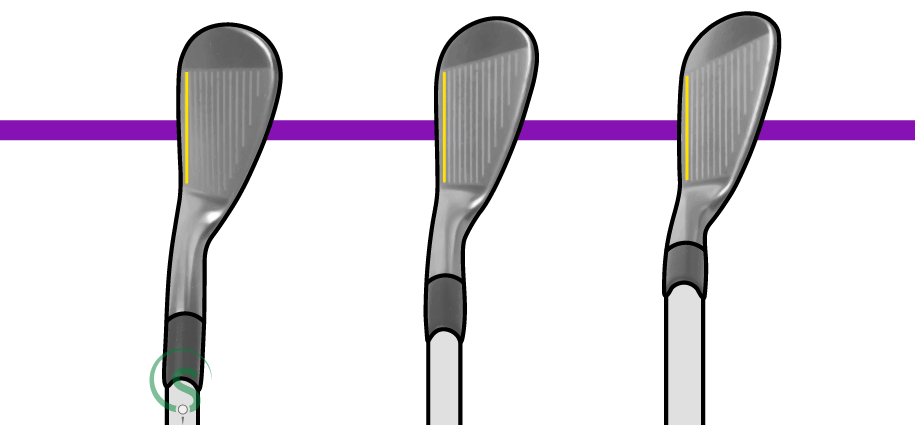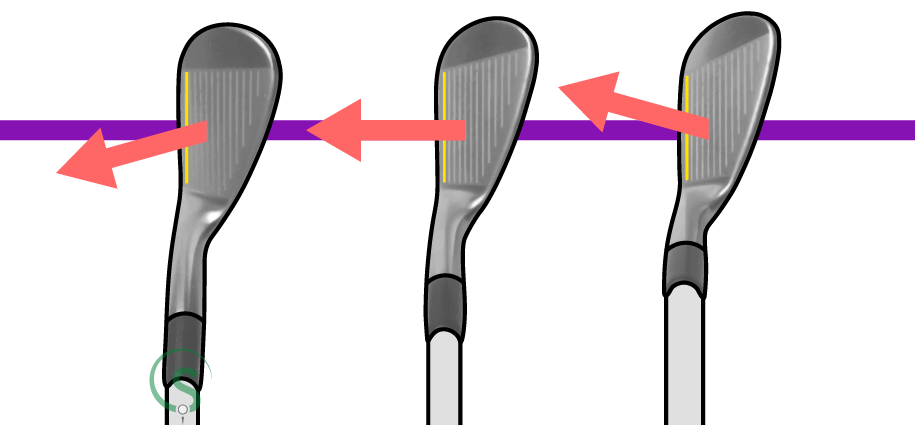Normal to the Clubface
It seems simple enough, but knowing where exactly the clubface is pointing is more complicated than most people realise.
For a start, the clubface, no matter which club you’re holding, is never actually pointing to the target.(1) You can certainly align the clubface with the target line, but in reality the clubface points upwards, above the actual target. This is due to the club’s loft.(2)
When using the D Plane, and measuring where the clubface is pointing, we don’t draw a line along the ground, we measure a line perpendicular to the clubface. This is known as the “normal” to the clubface.(3)
The normal is an interesting concept, and once understood you’ll soon realise you may not be pointing your clubface where you think you are. Take for example these three clubs shown at impact. To the untrained eye, all three appear to be pointing along the target line (the purple line along the ground). You would think this, and most people do, because the leading edge on each clubface is perpendicular to the target line.
For a start, the clubface, no matter which club you’re holding, is never actually pointing to the target.(1) You can certainly align the clubface with the target line, but in reality the clubface points upwards, above the actual target. This is due to the club’s loft.(2)
When using the D Plane, and measuring where the clubface is pointing, we don’t draw a line along the ground, we measure a line perpendicular to the clubface. This is known as the “normal” to the clubface.(3)
The normal is an interesting concept, and once understood you’ll soon realise you may not be pointing your clubface where you think you are. Take for example these three clubs shown at impact. To the untrained eye, all three appear to be pointing along the target line (the purple line along the ground). You would think this, and most people do, because the leading edge on each clubface is perpendicular to the target line.
A
B
C

Now look at the same clubs from the front. You can see club 'A' has come into impact at a relatively shallow plane angle. As a result, the toe of the club is higher than the heel. Club 'B' has come into impact with the grooves parallel to the flat ground. Club 'C' has come into impact on a relatively steep plane, where the heel of the club is higher than the toe.

A
B
C
From the player’s perspective, the clubface for clubs 'A' and 'C' are square to the target line, but due to the club’s loft and the plane angle,(4) the normal to the clubface is not. Clubs 'A' and 'C' are pointing left and right, respectively, of the target line. This is an optical illusion few are aware of, or make allowances for.(5)

So in order to have the clubface truly aligned to the target when hitting the ball, the clubface needs to be perpendicular to the target line, and the leading edge parallel to the ground during impact.

